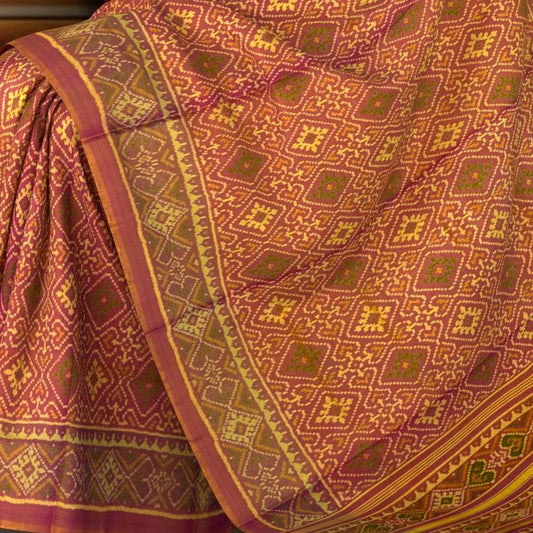Borchapori’s Women in Golaghat are Weaving Tradition and Opportunity through Handloom
Assam is home to a vast community of weavers who are shaping the narrative of its rich handloom industry. Among these, the women of Borchapori, a village in Borapathar, Golaghat, stand at the forefront of a transformative journey.
In Assamese culture, weaving has long been a tradition deeply embedded in domestic life, with women expected to master the craft. However, the women of Borchapori saw beyond these domestic expectations, using their weaving skills as a tool for self-reliance and empowerment. For them, weaving became not only a way to preserve tradition but also to reshape their own futures.

One inspiring example is the story of Shrimati Mohila Saikia, who now works as a weaver at the Borchapori Handloom Centre. This centre was established under the CSR initiative of Cairn to create sustainable livelihoods for the self-help groups in Borapathar. It exemplifies a successful partnership between public and private sectors, aimed at uplifting communities.
In Hazarigaon, a tea tribe region, access to resources like the Assam State Rural Livelihood Mission (ASRLM) and the handloom department had previously been limited. The CSR team from Cairn played a pivotal role in connecting local communities to these initiatives, helping them benefit from the Government of Assam’s Swanibhar Nari scheme.
Under this scheme, each registered self-help group (SHG) produces over 2,000 gamosas, which are purchased directly by the handloom department at a fixed price of Rs 270 per unit. Collectively, 28 SHGs were assigned the task of producing 56,000 gamosas, with a total budget of Rs 1.51 crore. To date, around 30% of these orders have already been delivered to the government.
This initiative has had a profound impact, boosting both the self-confidence and economic prospects of women like Mohila. Her journey, which began in her teenage years with dreams once beyond reach, is now a success story. “Weaving wasn’t just a responsibility—it was a way to shape our future,” she says. With determination, she and other women in Borchapori have found empowerment through the handloom centre and the Swanibhar Nari Scheme.
Cairn plans to further develop this sustainable livelihood initiative by adding three more weaving looms, including a Jacquard machine for each. There are also plans to expand the handloom centre’s facilities, improving its structure and bringing more SHGs into the fold.

With this support, the productivity of the women involved has increased by 30%, resulting in better livelihoods. “The new machines have changed everything. It used to take us 2-3 days to weave a single gamosa. Now, we can make 4-5 in just one day,” Mohila shares proudly. The women have also expanded their product offerings to include mekhela chadors, selengs, shawls, and handkerchiefs. Discussions with the Export Promotion Council for Handicrafts (EPCH) in Guwahati are underway to create sustainable market linkages for their products.
This initiative has not only transformed individual lives but has had a wider impact on the entire community. “These efforts have given us the chance to dream bigger and achieve more,” says Mohila, representing 60 SHGs and 600 women whose lives have been changed by this project.







Leave a comment
Please note, comments need to be approved before they are published.